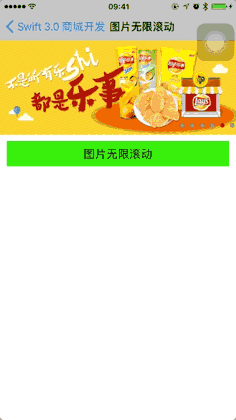写在前面
在做项目的过程中,偶尔会转牛角尖,比如感觉很喜欢 京东 淘宝 的上拉弹出层获取商品属性的效果,于是就各种寻求思路,最终实现并封装成自己的类库,LWPopupViewController。将需要使用弹出层的 UIViewController 继承 LwPopupViewController 即可。简单易用。
效果图
我的项目效果图
设计思路
其实看起来无处下手的功能,分析起来很简单。
组件
- 首先此功能继承于一个 ViewController,在其中定义两个子视图(maskView 和 popView)
- maskView 是这盖层视图,popView 是弹出层视图。
原理
弹出过程:整个 ViewController 被缩放形成缩小状态(具体动画后续讲解);将 maskView 添加到 主视图(UIApplication.shared.keyWindow?)中,形成遮挡层。popView 添加到 主视图(UIApplication.shared.keyWindow?)中并动态修改 frame 形成弹出动画效果。
弹回过程:popView 通过修改 frame 在主视图中隐藏后,隐藏 maskView,同时 主 ViewController 从缩放状态回复到正常状态,最后将 maskView 和 popView 从应用主视图中移除。
具体实现
定义枚举类型
巧用枚举类型,将很大提高代码的逻辑性
// 主视图缩放 步骤
enum LWAnimateType {
case first
case second
}
// 弹出层操作事件
enum LWActionType {
case popUp
case popDown
}
定义控制器以及常规属性
class LWPopController: UIViewController {
// 主视图控制器——视图
var rootView = UIView()
// 遮挡层
var maskView: UIView!
// 弹出层视图
var popView:UIView!
// 弹出层的高度 默认:400
var popViewHeight:CGFloat = SCREEN_HEIGHT * 4 / 5
// 动画周期
var duration: TimeInterval = 0.3
// 具体实现代码 在下面
}
初始化 maskView 和 popView
两个核心组件
override func viewDidLoad() {
super.viewDidLoad()
if let selfNV = self.navigationController {
rootView = selfNV.view
} else {
rootView = self.view
}
// 定义尺寸
maskView = UIView(frame: CGRect(x: 0, y: 0, width: SCREEN_WIDTH, height: SCREEN_HEIGHT))
// 定义背景色
maskView.backgroundColor = UIColor.black
// 定义透明度
maskView.alpha = 0.2
// 添加点击事件
let tapGesture = UITapGestureRecognizer(target: self, action: #selector(popDown))
maskView.addGestureRecognizer(tapGesture)
// 确保视图不被当前 UIView 视图遮挡
maskView.layer.zPosition = CGFloat(INT8_MAX)
// 定义尺寸
popView = UIView(frame: CGRect(x: 0, y: SCREEN_HEIGHT, width: SCREEN_WIDTH, height: popViewHeight))
/// 定义背景色
popView.backgroundColor = UIColor.white
/// 加个阴影
popView.layer.shadowColor = UIColor.black.cgColor
popView.layer.shadowOffset = CGSize(width: 0.5, height: 0.5)
popView.layer.shadowOpacity = 0.8
popView.layer.shadowRadius = 5
// 确保视图不被当前 UIView 视图遮挡
popView.layer.zPosition = CGFloat(INT8_MAX)
}
主视图 3D 设计(核心内容)
如何实现 当前 UIViewController 缩放效果
// 动画效果
fileprivate func transformAnimation(type: LWAnimateType) -> CATransform3D {
var transform = CATransform3DIdentity
switch type {
case .first:
// 视图角度
transform.m34 = -1.0 / 2000;
// 尺寸缩小(transform对象,X轴,Y轴,Z轴)
transform = CATransform3DScale(transform, 1, 1, 1)
// 沿某轴旋转(transform对象,旋转角度,X轴,Y轴,Z轴)
let angel = 15.0 * (CGFloat)(M_PI) / 180.0
transform = CATransform3DRotate(transform, angel, 1, 0, 0)
case .second:
// 第二次 变形实在第一次的基础上
transform.m34 = transformAnimation(type: .first).m34
// 沿着某轴移动(transform对象,X轴,Y轴,Z轴)
transform = CATransform3DTranslate(transform, 0, 10, 0)
// 尺寸缩小(transform对象,X轴,Y轴,Z轴)
transform = CATransform3DScale(transform, (SCREEN_WIDTH-40)/SCREEN_WIDTH, (SCREEN_HEIGHT-20)/SCREEN_HEIGHT, 1)
}
return transform
}
分析:3D 缩放分两步:
- 整个视图先沿着 X 轴旋转 15%;
- 整个视图再 X轴 左右个缩小 20尺寸,Y轴缩小 10尺寸;
popView 设置 frame
除了 当前 UIViewController 缩放动画,popView 也是需要弹出动画
// 获取 popView 和 maskView 新的 frame
func getViewFrame(type: LWActionType) -> CGRect {
var frame:CGRect
switch type {
case .popUp:
// popView 出现时的 frame
frame = popView.frame
frame.origin.y = SCREEN_HEIGHT - popViewHeight
case .popDown:
// popView 隐藏时的 frame
frame = popView.frame
frame.origin.y = SCREEN_HEIGHT
}
return frame
}
设计 弹出动画与 弹回动画
通过 iOS 自动动画将 当前 UIViewController 缩放、maskView 遮挡以及popView 弹出结合起来
// 弹出视图操作
func popUp() {
// 分别将 maskView 和 popView 添加到 应用主视图中,脱离与当前的 UIViewController 便于分离缩放动画
UIApplication.shared.keyWindow?.addSubview(maskView)
UIApplication.shared.keyWindow?.addSubview(popView)
UIApplication.shared.keyWindow?.bringSubview(toFront: maskView)
UIApplication.shared.keyWindow?.bringSubview(toFront: popView)
// 获取最终的 popView 的弹出层位置尺寸,使用动画实现弹出效果
let popViewFrame = getViewFrame(type: .popUp)
UIView.animate(withDuration: self.duration,
delay: 0,
options: UIViewAnimationOptions.curveEaseInOut,
animations: {
// 当前 UIViewController 缩放动画一
self.rootView.layer.transform = self.transformAnimation(type: .first)
}) { (bool) in
UIView.animate(withDuration: self.duration, delay: 0, options: UIViewAnimationOptions.curveEaseInOut, animations: {
// 当前 UIViewController 缩放动画二
self.rootView.layer.transform = self.transformAnimation(type: .second)
self.popView.frame = popViewFrame
}, completion: nil)
}
}
// 弹回操作
func popDown() {
self.maskView.removeFromSuperview()
let popViewFrame = getViewFrame(type: .popDown)
UIView.animate(withDuration: self.duration,
delay: 0,
options: UIViewAnimationOptions.curveEaseInOut,
animations: {
self.rootView.layer.transform = self.transformAnimation(type: .first)
}) { (bool) in
UIView.animate(withDuration: self.duration, delay: 0, options: UIViewAnimationOptions.curveEaseInOut, animations: {
self.popView.frame = popViewFrame
self.rootView.layer.transform = CATransform3DIdentity
}, completion: {(bool) in
self.popView.removeFromSuperview()
})
}
}
使用说明
其实我写这个类,用起来还是比较方便的,只需要将需要弹出的UIVeiwController 继承 LWPopViewController 即可,popView 将是父类属性,只需要在其中 addSubView 即可使用,通过 self.popUp() 和 self.popDown() 调用弹出、弹回事件。
结合上一节的内容,简单写了一下调用代码
class GoodsDetailController: LWPopController {
var imageScrollView = ImageScrollView(frame: CGRect(x: 0, y: 0, width: SCREEN_WIDTH, height: 150))
var data = [ImageScrollData]()
override func viewDidLoad() {
super.viewDidLoad()
self.view.backgroundColor = UIColor.white
edgesForExtendedLayout = .init(rawValue: 0)
self.title = "图片无限滚动"
self.view.addSubview(imageScrollView)
for i in 1 ... 6 {
let item = ImageScrollData(imageUrl: "image_scroll_0\(i).jpg", imageDescribe: nil)
data.append(item)
}
imageScrollView.data = data
self.popView.backgroundColor = .red
initView()
}
func initView() {
self.edgesForExtendedLayout = .init(rawValue: 0)
self.view.addSubview(btnPopup)
btnPopup.frame = CGRect(x: 10, y: imageScrollView.bottomY + 10, width: SCREEN_WIDTH - 20, height: 40)
}
override func didReceiveMemoryWarning() {
super.didReceiveMemoryWarning()
// Dispose of any resources that can be recreated.
}
func showPop() {
self.popUp()
}
func closePage() {
self.dismiss(animated: true, completion: nil)
}
fileprivate var btnPopup: UIButton = {
let object = UIButton()
object.tag = 1
object.layer.cornerRadius = 2
object.backgroundColor = UIColor.green
object.setTitle("图片无限滚动", for: .normal)
object.setTitleColor(UIColor.black, for: .normal)
object.addTarget(self, action: #selector(showPop), for:
.touchUpInside)
return object
}()
}
最终效果



